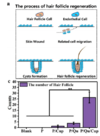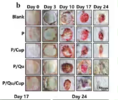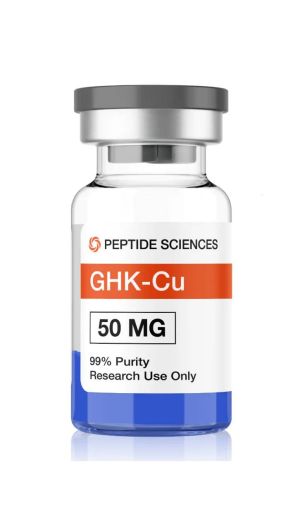waynakyo
Experienced Member
- Reaction score
- 466
Great study. And it was cited as an exciting finding in that Nature article I posted earlier today, which I encourage you to read.
Basically four chinese herbs have properties that help hair regeneration in wound healing. This study looks at the science behind it. They see Quercetin-copper being the key factor. The results on mice, alas, are impressive. But this treatment has been used in humans for decades (in China).

In deep burn injuries, the dermis of the skin is often severely damaged, and hair follicles are also lost and lose the potential for regeneration. Therefore, the development of wound dressings that promote hair follicle regeneration has important clinical significance. In this study, inspired by an ancient Chinese medicine prescription, a novel fibrous membrane (P/Qu/Cup; P, PCL; Qu, quercetin; Cup, cuprorivaite, CaCuSi4O10) containing quercetin-copper (Qu-Cu) chelates was fabricated by using quercetin and a highly bioactive bioceramic (CaCuSi4O10) incorporated in PCL/gelatin electrospun fibers. The fibrous membrane can effectively release Qu and Cu ions to induce proliferation, migration, and differentiation of skin and hair follicle related cells, and the Qu, Cu ions, and Si ions released from the composite membrane revealed synergistic activity to stimulate hair follicle regeneration and wound healing. Our study demonstrated that the analysis of the common components in ancient Chinese prescription is an effective approach to design novel bioactive materials for regenerative medicine.
Basically four chinese herbs have properties that help hair regeneration in wound healing. This study looks at the science behind it. They see Quercetin-copper being the key factor. The results on mice, alas, are impressive. But this treatment has been used in humans for decades (in China).
Abstract
In deep burn injuries, the dermis of the skin is often severely damaged, and hair follicles are also lost and lose the potential for regeneration. Therefore, the development of wound dressings that promote hair follicle regeneration has important clinical significance. In this study, inspired by an ancient Chinese medicine prescription, a novel fibrous membrane (P/Qu/Cup; P, PCL; Qu, quercetin; Cup, cuprorivaite, CaCuSi4O10) containing quercetin-copper (Qu-Cu) chelates was fabricated by using quercetin and a highly bioactive bioceramic (CaCuSi4O10) incorporated in PCL/gelatin electrospun fibers. The fibrous membrane can effectively release Qu and Cu ions to induce proliferation, migration, and differentiation of skin and hair follicle related cells, and the Qu, Cu ions, and Si ions released from the composite membrane revealed synergistic activity to stimulate hair follicle regeneration and wound healing. Our study demonstrated that the analysis of the common components in ancient Chinese prescription is an effective approach to design novel bioactive materials for regenerative medicine.



